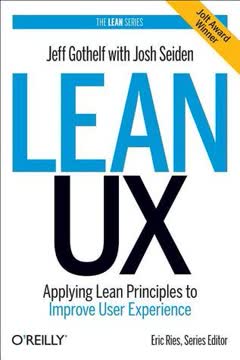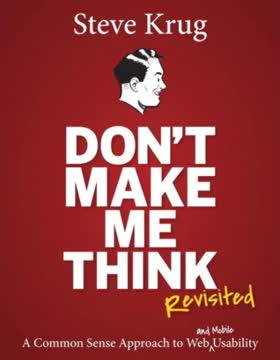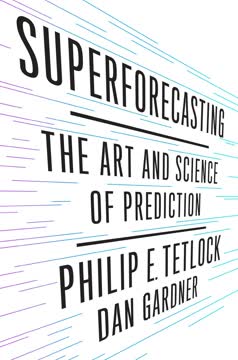Key Takeaways
1. Align UX content with organizational and user goals
The strategic purpose of UX content is to meet two sets of goals: the goals of the organization responsible for the experience, and the goals of the people using the experience.
Virtuous cycle. UX content plays a crucial role in creating a virtuous cycle between the organization and users. This cycle involves attracting users, converting them, onboarding them, engaging them, and transforming them into fans who attract more users. By understanding both organizational and user goals, UX writers can craft content that:
- Addresses user needs and pain points
- Supports business objectives like engagement, conversion, and retention
- Guides users through the experience efficiently
- Builds trust and credibility for the brand
To achieve this alignment, UX writers must collaborate closely with various stakeholders, including product managers, designers, researchers, and marketers, to gain a comprehensive understanding of both user and business needs.
2. Develop a consistent voice to build brand recognition
Voice is the set of characteristics that allows content to create that feeling.
Voice chart. Creating a consistent voice across all UX content is essential for brand recognition and user trust. Develop a voice chart that defines:
- Product principles
- Concepts to emphasize
- Vocabulary guidelines
- Verbosity preferences
- Grammar rules
- Punctuation and capitalization standards
The voice chart serves as a decision-making tool for UX writers and helps align content across different teams and touchpoints. It ensures that users have a cohesive experience throughout their journey, from marketing materials to in-app content and support documentation.
Benefits of a consistent voice:
- Strengthens brand identity
- Increases user familiarity and comfort
- Facilitates faster decision-making in content creation
- Improves cross-team collaboration
3. Use conversation design for intuitive user experiences
Conversation is somehow in our genetic makeup. Humans take turns speaking and responding in ways that cross languages, continents, and cultures.
Role-playing exercise. Implement a conversation design approach to create more intuitive and natural user experiences. This method involves:
- Identifying user goals and organizational objectives
- Role-playing conversations between the user and the experience
- Recording and refining the conversation flow
- Transforming the conversation into UI elements and content
Benefits of conversation design:
- Creates more natural and intuitive interactions
- Uncovers edge cases and potential user frustrations
- Helps identify key terminology and introduce it at the right moments
- Facilitates collaboration between UX writers, designers, and product managers
By starting with conversation, teams can create experiences that feel more human and responsive to user needs, leading to higher engagement and satisfaction.
4. Apply UX text patterns to streamline content creation
The goal of this set of UX text patterns is to establish an easy, recognizable starting place to write consistently high-quality text.
Common patterns. Utilize established UX text patterns to create consistent, high-quality content efficiently. Key patterns include:
- Titles: Provide context and clarity
- Buttons: Enable user actions
- Descriptions: Offer additional information
- Empty states: Set expectations when content is missing
- Labels: Minimize effort to understand UI elements
- Controls: Inform users of customization options
- Text input fields: Guide accurate information entry
- Transitional text: Confirm ongoing actions
- Confirmation messages: Reassure users of completed actions
- Notifications: Inform or remind users to engage
- Errors: Help users recover and move forward
By leveraging these patterns, UX writers can:
- Save time in content creation
- Maintain consistency across the experience
- Improve usability through familiar conventions
- Focus creative energy on unique challenges and edge cases
5. Edit UX content to be purposeful, concise, and clear
Editing is the process of iterating the text to make sure that it meets its purpose, it's concise, it's conversational, and it's clear to the person using the experience.
Four-phase editing. Implement a structured editing process to refine UX content:
- Purposeful: Ensure content meets user and organizational goals
- Concise: Reduce text to essential information
- Conversational: Make language natural and engaging
- Clear: Eliminate ambiguity and improve understanding
Editing tips:
- Edit in context of the design
- Consider screen size and reading format
- Aim for 40 characters wide and 3 lines or fewer
- Read content aloud to test conversational tone
- Use simple, common words for clarity
- Avoid idioms or metaphors that may not translate well
By following this process, UX writers can create content that is more effective, user-friendly, and aligned with both user and business needs.
6. Measure UX content effectiveness through multiple methods
By measuring the improvement UX writing makes in the outcomes we measure, we can demonstrate the value of investing in UX writing.
Multi-faceted approach. Implement a comprehensive measurement strategy to evaluate and improve UX content effectiveness:
-
Direct measurement:
- A/B testing
- Engagement metrics (e.g., Daily Active Users)
- Completion rates
- Retention rates
- Referral rates
- Cost reduction
-
UX research:
- Analysis of reviews, questions, and comments
- User interviews
- Usability testing
- Surveys
-
Heuristic analysis:
- UX content scorecard (assessing usability and voice)
- Accessibility evaluation
- Clarity and concision checks
By combining these methods, UX writers can:
- Quantify the impact of content improvements
- Identify areas for optimization
- Justify investment in UX content
- Continuously refine the user experience
7. Implement tools and processes for efficient UX writing
The UX writer must be willing to use the tools they have to bring empathy and analysis to each interaction a person will have with the words in an experience.
Toolchain optimization. Establish a set of tools and processes to streamline UX writing workflows:
-
Drafting:
- Use design tools (e.g., Sketch, Figma) to write in context
- Edit screenshots for quick iterations
-
Review:
- Create content review documents
- Use collaborative tools for stakeholder feedback
-
Publishing:
- Integrate with engineering workflows
- Participate in code reviews
-
Work tracking:
- Implement a task management system
- Prioritize and organize UX content work
Benefits of a well-defined toolchain:
- Improves collaboration with designers and engineers
- Ensures content is reviewed in context
- Facilitates version control and iteration
- Provides visibility into UX content workload and impact
8. Execute a 30/60/90-day plan to establish UX content strategy
To do great work, you need to think systematically about the deep connective tissue of the content: the core terminology and the voice that permeates the conversations the experience has with the people who use it.
Phased approach. Implement a structured 30/60/90-day plan to establish a strong UX content strategy:
Phase 1 (0-30 days): What and Who
- Learn about the experience, users, and team
- Conduct stakeholder interviews
- Create initial content strategy document
- Begin tactical writing tasks
Phase 2 (30-60 days): Fires and Foundations
- Address urgent content needs
- Establish content tracking system
- Implement minimum viable process
- Measure baseline content effectiveness
- Develop voice chart and terminology list
Phase 3 (60-90 days): Rapid Growth
- Present comprehensive content strategy
- Obtain stakeholder buy-in and sign-off
- Scale content creation and improvement efforts
By following this phased approach, UX writers can:
- Quickly integrate with the team and understand the product
- Establish credibility through early wins
- Build a solid foundation for long-term content strategy
- Demonstrate the value of UX content to stakeholders
Last updated:
FAQ
What's "Strategic Writing for UX" about?
- Focus on UX Content: "Strategic Writing for UX" by Torrey Podmajersky is about integrating content into user experience design to drive engagement, conversion, and retention.
- Content as a Pillar: The book emphasizes content as a critical pillar alongside design and research in creating effective user experiences for apps, websites, and games.
- Practical Strategies: It provides actionable tips and strategies for incorporating content into product strategy from the beginning.
- Audience: The book is valuable for students and seasoned professionals looking to enhance their understanding of UX writing.
Why should I read "Strategic Writing for UX"?
- Improve Product Experience: Reading this book can help you understand how great UX copy can improve your product quickly and effectively.
- Comprehensive Guide: It offers a comprehensive guide to writing UX content that aligns with organizational goals and user needs.
- Actionable Insights: The book is packed with actionable insights and strategies that are long overdue in the field of UX writing.
- Reference Material: It serves as a reference for anyone involved in writing, designing, or influencing digital user experiences.
What are the key takeaways of "Strategic Writing for UX"?
- Align Goals: Align the goals of the organization with those of the users to create effective UX content.
- Voice and Tone: Develop a consistent voice and tone that users can recognize and trust across all content.
- Iterative Process: UX writing is an iterative process that involves creating, measuring, and refining content.
- Measure Effectiveness: Use direct measurement, research, and heuristics to evaluate the effectiveness of UX content.
What are the best quotes from "Strategic Writing for UX" and what do they mean?
- "Words Make Experiences Work": This quote emphasizes the power of words in shaping user experiences and achieving organizational goals.
- "They may forget what you said, but they will never forget how you made them feel": Highlights the importance of creating a memorable and positive emotional impact through UX content.
- "If you can’t measure it, you can’t improve it": Stresses the necessity of measuring UX content effectiveness to drive improvements.
- "Nobody plans to fail. They just fail to plan": Underlines the importance of strategic planning in UX writing to ensure success.
How does Torrey Podmajersky suggest aligning goals in UX writing?
- Understand Both Sides: Align the goals of the organization with those of the users by understanding both perspectives.
- Virtuous Cycle: Use the concept of a virtuous cycle to attract, convert, engage, and transform users into advocates.
- Content Strategy: Choose content that meets both organizational and user goals throughout the user journey.
- Iterative Alignment: Continuously align and realign goals through iterative content creation and testing.
What is the role of voice in "Strategic Writing for UX"?
- Consistency Across Content: Voice ensures consistency across all user interactions, making the brand recognizable and trustworthy.
- Framework for Decisions: A voice chart provides a framework for making content decisions and maintaining alignment with product principles.
- Tone Variability: While voice remains consistent, tone can vary to suit different contexts within the user experience.
- Emotional Connection: A well-defined voice helps create an emotional connection with users, enhancing their overall experience.
How does "Strategic Writing for UX" define UX text patterns?
- Reusable Solutions: UX text patterns are reusable solutions to common design problems, providing a starting point for writing effective content.
- Variety of Patterns: The book covers patterns for titles, buttons, descriptions, empty states, labels, controls, and more.
- Purpose and Use: Each pattern is defined by its purpose and how it should be used to enhance user experience.
- Examples Provided: The book provides examples of each pattern using fictional experiences to illustrate their application.
What is the editing process in "Strategic Writing for UX"?
- Four Phases: The editing process involves four phases: making the text purposeful, concise, conversational, and clear.
- Iterative Refinement: Editing is an iterative process that refines text to better meet user and organizational goals.
- Contextual Editing: Text should be edited in the context of the design to ensure it fits the visual and interactive elements.
- Feedback and Testing: Incorporate feedback and testing to ensure the text is effective and resonates with users.
How does Torrey Podmajersky suggest measuring UX content effectiveness?
- Direct Measurement: Use direct measurement of user behaviors, such as engagement and completion rates, to assess content effectiveness.
- Research Methods: Conduct UX research, including interviews and surveys, to gather qualitative insights.
- Heuristic Analysis: Apply heuristics to evaluate content against usability and voice criteria.
- Continuous Improvement: Use measurement results to continuously improve UX content and align it with user needs.
What tools does "Strategic Writing for UX" recommend for UX writing?
- Drafting Tools: Use tools like Sketch, Figma, or PowerPoint to draft and iterate UX text in the context of designs.
- Content Review: Manage content review with collaborative tools like Google Docs to gather feedback from stakeholders.
- Publishing Systems: Work with engineers to publish text in code, ensuring accuracy and consistency.
- Tracking Systems: Use tracking systems like Jira or Trello to manage and prioritize UX content tasks.
What is the 30/60/90-day plan in "Strategic Writing for UX"?
- Phase 1: What and Who: Focus on learning about the experience, the users, and the team in the first 30 days.
- Phase 2: Fires and Foundations: Address urgent content issues while laying the foundation for strategic improvements.
- Phase 3: Rapid Growth: Implement the content strategy and engage in prioritized UX writing tasks.
- Building Trust: Use the plan to build trust with the team and demonstrate the value of UX writing.
How does "Strategic Writing for UX" suggest introducing UX content to a team?
- Frame the Work: Explain UX writing in terms of programming, emphasizing its role in meeting goals.
- Collaborative Process: Involve team members in the content process to build understanding and trust.
- Strategic Alignment: Align UX content with organizational and user goals to demonstrate its impact.
- Continuous Communication: Maintain open communication with the team to ensure ongoing collaboration and improvement.
Review Summary
Strategic Writing for UX receives high praise for its concise, practical approach to UX writing. Readers appreciate its clear examples, actionable advice, and focus on both user needs and business goals. Many find it invaluable for establishing UX content strategies and improving product communication. The book is commended for its well-structured content, emphasis on accessibility, and insights on measuring content effectiveness. While some wished for more depth in certain areas, it's widely recommended for UX writers, designers, and product teams seeking to enhance their digital experiences.
Similar Books









Download PDF
Download EPUB
.epub digital book format is ideal for reading ebooks on phones, tablets, and e-readers.




